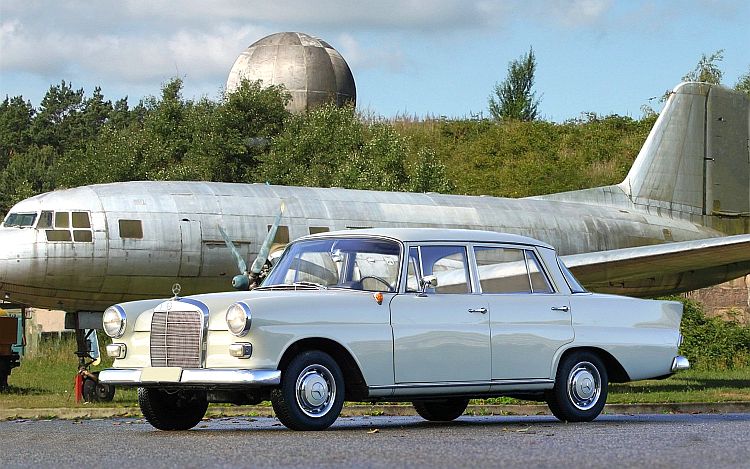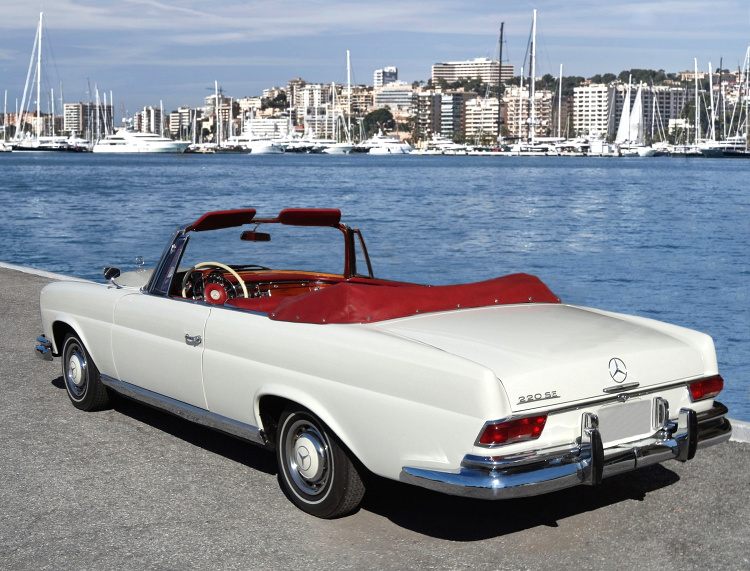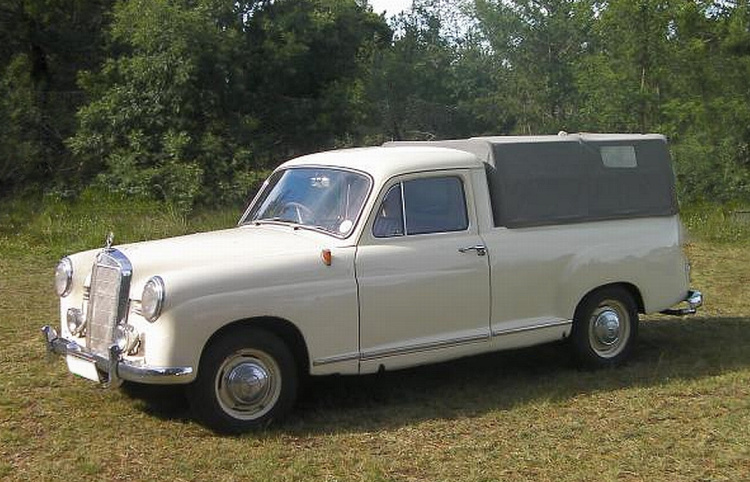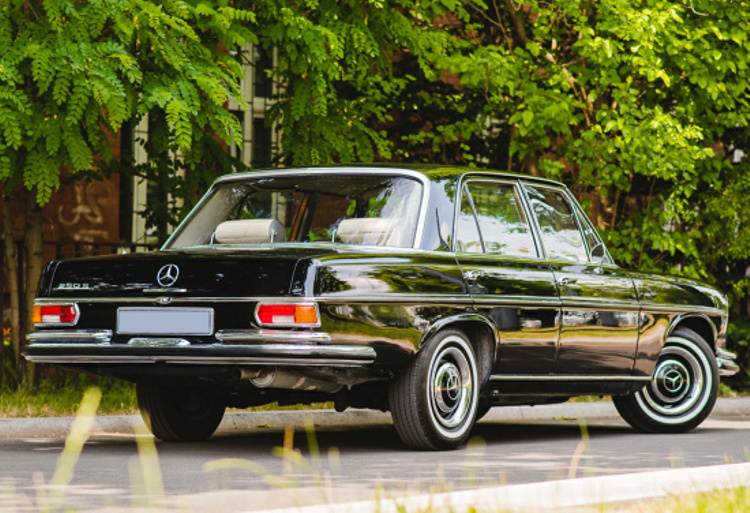Mercedes 170 S, the late 1940s S-Class
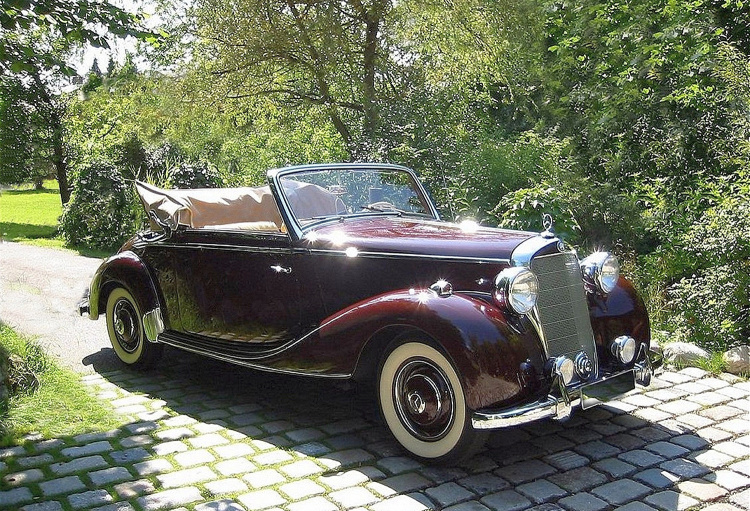 Mercedes 170 S: This article does not deal with the Mercedes 170 V, built from 1945 till 1953, but its successor, the Mercedes 170 S, built from 1949 till 1955.
Mercedes 170 S: This article does not deal with the Mercedes 170 V, built from 1945 till 1953, but its successor, the Mercedes 170 S, built from 1949 till 1955.
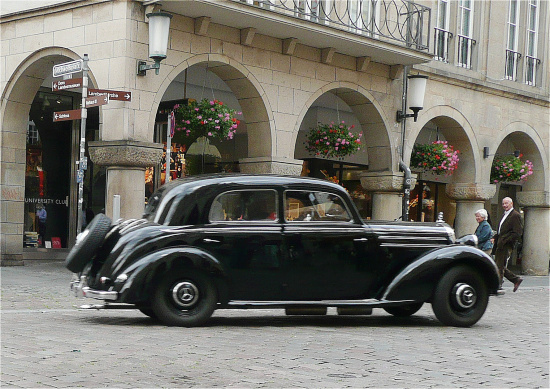
Mercedes 170 S Sedan, 1951
It is interesting that a Mercedes 170 S, once thought to be for the upper middle-class prior to World War II, has developed in Germany into a car for the rich after the war. But those were trying times and the upper middle-class just could not afford these cars at the end of the 1940s anymore. They either had older pre-war automobiles or new 1.2-liter Ford or Opel. The rich usually bought an Opel Kapitän, which used a six-cylinder power-plant and could be purchased for 9,950. – DM ($ 2,360. – at 1950s exchange rate). It had in those days a huge sales lead over the four-cylinder Mercedes 170 S, which had a price tag of 10,100. – DM ($ 2,400. -) at its introduction in 1949. That type of investment bought you in those days an eight-cylinder Packard in the US.
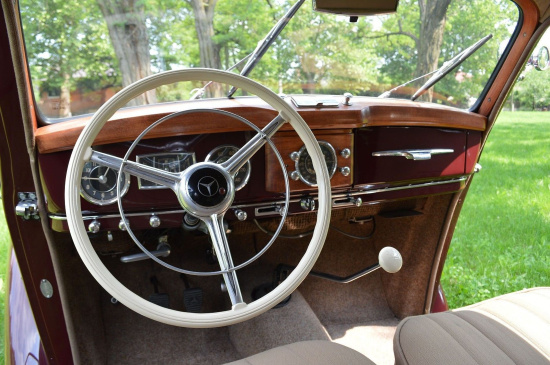
Mercedes 170 S dashboard
The Mercedes 170 S had to serve as one of just two cars, MB could offer
Mercedes did not have a six-cylinder yet, because the necessary tooling had not survived the war and money for new equipment was scarce so shortly after the war. So the Mercedes 170 S, just like its predecessor, was Daimler-Benz’ answer to the Kapitän. It had to be sold in sufficient quantities to allow developing more modern engines and buy badly needed machinery.

1952 Mercedes 170S petrol engine
Given its high price and banking on its quality and the good image the company enjoyed, the Mercedes 170 S was seen as a luxury vehicle. And aided by the press, the four-cylinder car filled that role remarkably well. That it was not such a popular seller as its main rival was for Daimler-Benz not a real issue. Next to improving their immediate financial situation, the company’s medium term planning was to get a firm grip on the luxury car market. Although they did look into the lower priced car market too (W122), their real expertise was the upper middle class and luxury car market. And the Mercedes 170 S was just the first, but vital step in that direction.
Two elegant Cabriolets arrived
An important image boost came from the introduction of two elegant convertibles, the two-seater Cabriolet A and the four-seater Cabriolet B. They were built by hand and in keeping with its pre-war tradition, the Cabriolet A even had a wooden body structure. All chrome applications on these special cars were made of solid brass, hand fitted first, adjusted and only then chromed. The dashboard’s top was covered with solid wood, with the same wood on the window sills and in the center of the dashboard. Although the standard sedan had the same areas covered with wood, the one on the cabriolets and here especially the Cabriolet A, had a different, much richer looking veneer. One could choose between walnut and bur walnut veneer. Other options were available on request, but almost never ordered.

Mercedes Cabriolet A (in front) and Cabriolet B
Although both Mercedes-Benz Cabriolets had a price tag that made them the most expensive German cars until the arrival of the six-cylinder 220 models, it is doubtful that Daimler-Benz made much money with them.
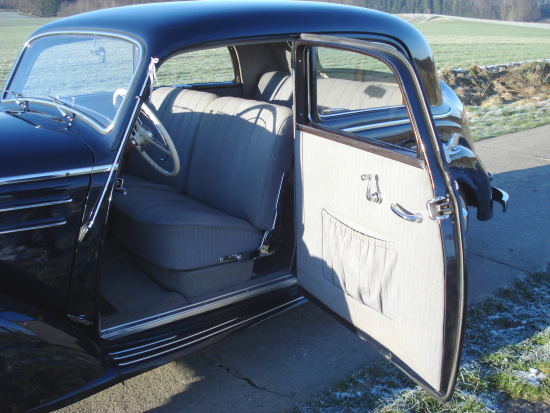
1951 Mercedes 170 DS
A Mercedes 170 Diesel is once again part of the model range
Daimler-Benz continued its tradition of offering a diesel version. It became available to the public in 1952 and was known as Mercedes 170 DS. It was the same engine that powered already the previous 170 V. A rather frugal and noisy affair, it destroyed somewhat the luxury image of the 170 S. Management was of course aware of this. They had wisely decided to hold the introduction back (and keep offering the old 170 V as diesel) well after the new six-cylinder 220 had arrived. That way the role of executive transportation had shifted to the newer model and the “older” 170 S remained popular with people, who had a keen eye for quality in an economical package.
The diesel engine produced 40 horse-powers at 3,200 rpm, which resulted in a top speed of 105 km/h (65 mph). 40 hp for a car weighting some 1.2 tons was nothing to be too excited about, but customers did not mind. The least thing they expected from their diesel was to break any speed records.
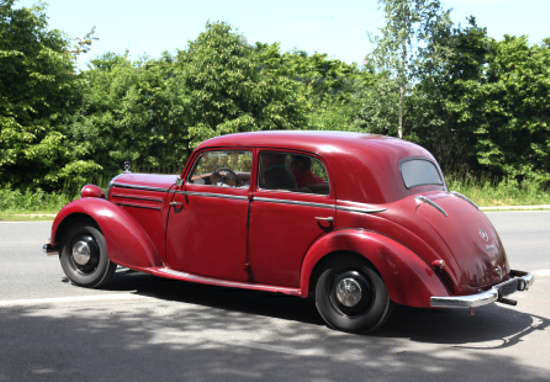
1954 Mercedes 170 S-V
Sales performance
When the more modern looking 180 ponton was introduced in 1953, the styling of the Mercedes 170 looked clearly pretty dated. But as Daimler-Benz had decreased its price, the diesel version continued to remain popular. People still saw in it a reliable alternative to the 180. It did not sell as many units as the more modern alternative of course, but it outsold its equally available petrol sibling in 1954, its last full year of production, almost eight to one. While 15,532 units of the new 180 D were sold in 1954, some 5,992 units of the Mercedes 170 S-D found a buyer. That was just 742 units shy from its best sales year 1952 as 170 DS. Not bad for a design that had its roots back in the mid-1930s.
Here is a more detailed sales breakdown:
- 170 S (1949-1952): 28.764
- 170 Sb (1952-1953): 8.094
- 170 DS (1952-1953): 12.985
- 170 S-V (1953-1955): 3.122
- 170 S-D (1953-1955): 14.887
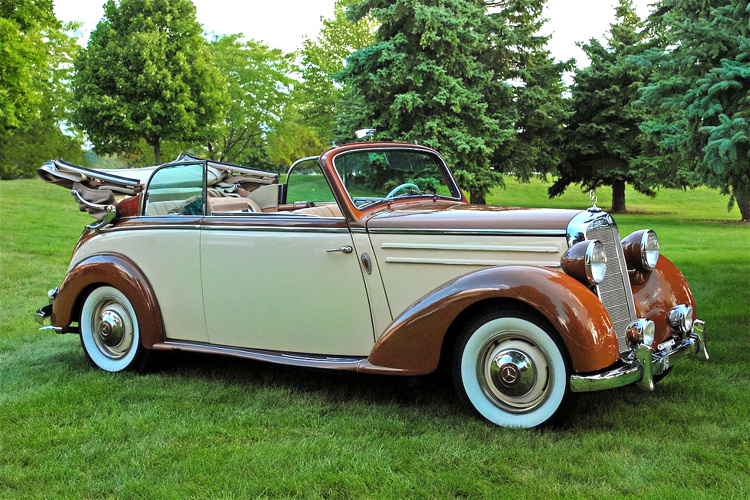
If you want to read more about the Mercedes 170V (pre- and post-war) and 170S, here is the link to my book. I am sure you will enjoy the reading.
A German version of this book can be found here.

